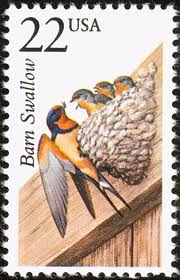Barn swallows are birds with a long history of associating with people. They frequently make their mud nests under the eaves of houses, stables and barns. These summer visitors fly enormous distances from South America to raise chicks in Canada, then gather in chattering flocks on overhead wires before heading south again for the winter. Shockingly, this once common and familiar bird has suffered drastic declines in population in recent decades. Since 1970, they have declined to less than a quarter of their previous number. The dramatic loss of these once common, artistically swooping, aerial insect-eaters, that brighten our countryside, is almost inexplicable. It should be a dire warning for the health of nature across the Americas.
Aerial insect-eaters (or insectivores) have decreased more than any other group in Canada, with 22 out of 26 breeding species showing a decline, including swallows, swifts and nighthawks. While the cause is uncertain, and these birds pass through many countries before raising chicks in Canada, a few ideas spring to mind. How many people still pepper their yards with cosmetic pesticides hoping for the perfect lawn and disregarding the health of wildlife (and humans)? How often do people knock down an “untidy” swallow’s nest, believing it to be an eyesore on their property or some sort of health hazard, rather than an opportunity to raise a family of bug eaters?
Source:
By Anne Murray, July 20, 2012
Anne Murray is a writer and naturalist, and the author of two books on the Fraser River delta—Tracing Our Past: A Heritage Guide to Boundary Bay and A Nature Guide to Boundary Bay—both available at bookstores and from Nature Guides B.C.
http://www.straight.com/article-738141/vancouver/anne-murray-bad-and-go…

- Log in to post comments
